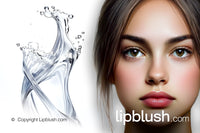6. "Biological" Side of the Procedure
Interplay of Laser Technology and Metabolic Responses
The laser removal process for semi-permanent makeup like Lip Blush or Powder Brows is a sophisticated blend of laser technology and the body's metabolic mechanisms. The laser's role is to break the pigment into smaller pieces, which the body's metabolism then processes for elimination. This coordinated effort aims to gradually reduce the pigment's appearance and restore the skin's natural tone. The goal is to stimulate the body's reactions to increase the likelihood of successfully breaking down the unwanted pigment particles and moving them to the lymphatic system.
Beyond the Beam: The Body's Natural Cleanup Mechanisms
Post-laser, the fragmented pigment particles are not static within the skin. The body utilizes its innate defense and cleansing systems to address these particles. Macrophages, a type of white blood cell, play a key role in this cleanup process. They specialize in ingesting and breaking down foreign materials, including the fragmented pigment particles from the laser treatment.
Crucial Role of Macrophages in Post-Laser Pigment Clearance
Understanding that the macrophage's response is part of a broader immune reaction triggered by the laser-induced fragmentation is vital. However, it's important not to oversimplify this process. Each pigment's reaction to laser exposure is unique and influenced by factors like particle size, chemical composition, and the nature of the particle's structure, whether it's crystalline, turbostratic, or paracrystalline.
Complexities of Pigment Fragmentation and Immune Response
While macrophages can engulf and digest large entities, such as bacteria up to 10 micrometers, they may not always capture smaller nanoparticles. Particles in a few hundred nanometers range might evade macrophages and potentially migrate deeper into the dermis, especially if they have strong chemical bonds, are chemically insoluble, or are small and dense. This possibility of deeper migration underscores the need to understand macrophages' limitations and the variability of their phagocytic ability.
Myriad Factors Influencing the Efficacy of Laser Removal
In conclusion, the physiological and biological aspects of the laser removal process are complex and should be approached with respect. Various factors influence the interaction between the laser-altered pigment and the body's immune system. Therefore, when discussing laser removal with clients, professionals should emphasize that the process involves a nuanced series of biological and chemical events, each contributing to the outcome of pigment removal.





